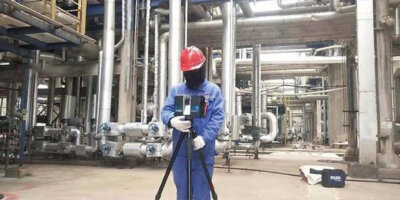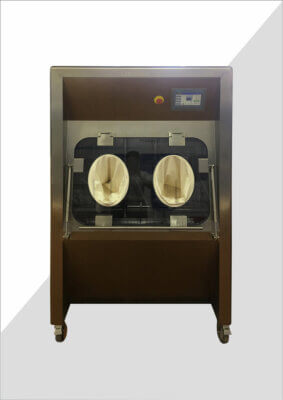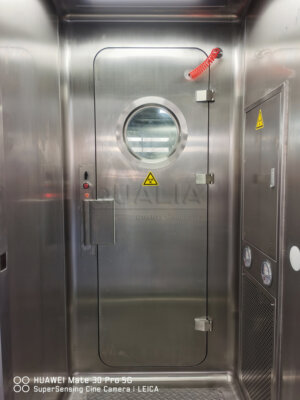The increasing complexity of biological research and the handling of potentially hazardous materials have necessitated advanced safety measures in laboratories worldwide. Among these measures, Effluent Decontamination Systems (EDS) play a crucial role in maintaining biosafety standards across different levels of containment. As we delve into the intricacies of EDS technologies, we'll explore how they adapt to the varying requirements of Biosafety Levels (BSL) 1 through 4, ensuring the protection of researchers, the environment, and the public at large.
Effluent Decontamination Systems are specialized technologies designed to treat and neutralize potentially infectious liquid waste before it leaves the laboratory environment. These systems are tailored to meet the specific needs of different biosafety levels, with each level requiring progressively more stringent containment and decontamination protocols. From the relatively low-risk environments of BSL-1 to the highly controlled settings of BSL-4, EDS technologies evolve in complexity and effectiveness to match the increasing potential hazards.
As we transition into a detailed examination of EDS technologies across biosafety levels, it's important to understand that these systems are not one-size-fits-all solutions. Each level of biosafety presents unique challenges and requirements, necessitating carefully engineered approaches to effluent decontamination. The following sections will explore the specific EDS technologies employed at each biosafety level, their operational principles, and the critical role they play in maintaining the integrity of containment protocols.
Effluent Decontamination Systems are essential components of biosafety laboratories, designed to neutralize potentially hazardous biological agents in liquid waste before it is released into the environment. These systems are tailored to meet the specific requirements of different biosafety levels, ensuring effective containment and protection against biohazards.
Before we delve into the specific EDS technologies for each biosafety level, let's take a look at an overview of the key characteristics and requirements for effluent decontamination across different BSL levels:
| Biosafety Level | Risk Level | Typical Agents | EDS Complexity | Treatment Methods |
|---|---|---|---|---|
| BSL-1 | Minimal | Non-pathogenic | Basic | Chemical disinfection |
| BSL-2 | Moderate | Moderate-risk pathogens | Intermediate | Chemical disinfection, heat treatment |
| BSL-3 | High | Serious or potentially lethal agents | Advanced | Heat treatment, chemical disinfection, filtration |
| BSL-4 | Extreme | Life-threatening agents | Highly advanced | Multiple barrier systems, heat treatment, chemical disinfection, filtration |
Now, let's explore the specific EDS technologies and their applications across different biosafety levels.
What are the EDS requirements for BSL-1 laboratories?
Biosafety Level 1 (BSL-1) laboratories deal with well-characterized agents that are not known to cause disease in healthy adults. While the risk level is minimal, proper effluent management is still essential to maintain good microbiological practices.
In BSL-1 settings, the EDS requirements are relatively basic compared to higher biosafety levels. The primary focus is on preventing the release of any potentially harmful microorganisms into the environment, even if they are generally considered non-pathogenic.
The EDS technologies employed in BSL-1 laboratories typically involve simple yet effective methods of treating liquid waste. These may include chemical disinfection systems that use common laboratory disinfectants to neutralize microorganisms before the effluent is released into the general sewage system.
| BSL-1 EDS Characteristics | Description |
|---|---|
| Treatment Method | Chemical disinfection |
| Complexity | Low |
| Automation | Minimal |
| Monitoring | Basic |
In BSL-1 laboratories, Effluent Decontamination Systems primarily rely on chemical disinfection methods to treat liquid waste. While the risk level is low, these systems ensure that good laboratory practices are maintained and prevent the unintended release of microorganisms into the environment.
How do EDS technologies adapt to BSL-2 requirements?
As we move to Biosafety Level 2 (BSL-2), the complexity of EDS technologies increases to match the higher risk associated with the agents handled in these laboratories. BSL-2 facilities work with moderate-risk pathogens that can cause human disease but are generally treatable.
The EDS technologies for BSL-2 laboratories build upon the foundations of BSL-1 systems but incorporate more advanced treatment methods. These systems often combine chemical disinfection with heat treatment to ensure a higher level of decontamination efficacy.
['QUALIA'] offers specialized EDS solutions for BSL-2 laboratories, incorporating robust treatment processes to handle the increased risk level. These systems often feature automated controls and monitoring to ensure consistent and reliable decontamination of effluents.
| BSL-2 EDS Features | Description |
|---|---|
| Treatment Methods | Chemical disinfection and heat treatment |
| Automation Level | Moderate |
| Monitoring Systems | Enhanced |
| Redundancy | Basic backup systems |
Effluent Decontamination Systems for BSL-2 laboratories employ a combination of chemical and thermal treatment methods to effectively neutralize moderate-risk pathogens. These systems are designed with increased automation and monitoring capabilities to ensure consistent performance and maintain the integrity of containment protocols.
What advanced features are incorporated in EDS for BSL-3 facilities?
Biosafety Level 3 (BSL-3) laboratories handle potentially lethal agents that can be transmitted through the air, requiring stringent containment measures. The EDS technologies for BSL-3 facilities are significantly more advanced, incorporating multiple layers of treatment and sophisticated control systems.
In BSL-3 settings, EDS technologies typically include a combination of heat treatment, chemical disinfection, and filtration systems. These multi-stage treatment processes ensure that even highly resilient pathogens are effectively neutralized before the effluent leaves the containment area.
The ['QUALIA'] EDS solutions for BSL-3 laboratories incorporate state-of-the-art technologies such as high-temperature steam sterilization, advanced chemical treatment systems, and multi-stage filtration. These systems are designed with redundancy and fail-safe mechanisms to prevent any possibility of containment breach.
| BSL-3 EDS Components | Function |
|---|---|
| Heat Treatment | High-temperature sterilization |
| Chemical Disinfection | Advanced oxidation processes |
| Filtration | Multi-stage, including HEPA filtration |
| Control Systems | Fully automated with real-time monitoring |
| Redundancy | Multiple backup systems and power supplies |
EDS technologies for BSL-3 facilities incorporate advanced multi-stage treatment processes, including high-temperature sterilization, chemical disinfection, and filtration. These systems are designed with multiple layers of redundancy and sophisticated control mechanisms to ensure the highest level of containment for potentially lethal agents.
How do EDS technologies meet the extreme requirements of BSL-4 laboratories?
Biosafety Level 4 (BSL-4) represents the highest level of biological containment, dealing with dangerous and exotic agents that pose a high risk of life-threatening disease. EDS technologies for BSL-4 facilities are at the pinnacle of sophistication, incorporating multiple barrier systems and the most advanced treatment methods available.
In BSL-4 laboratories, EDS technologies are designed with a "no-failure" philosophy. These systems typically include multiple stages of treatment, each capable of independently achieving complete sterilization. The redundancy in these systems ensures that even in the event of a component failure, the containment integrity is maintained.
The ['QUALIA'] EDS solutions for BSL-4 facilities incorporate the most advanced technologies available, including high-pressure steam sterilization, chemical treatment with multiple disinfectants, ultra-filtration, and even radiation treatment in some cases. These systems are fully automated and continuously monitored, with multiple fail-safe mechanisms and backup power supplies.
| BSL-4 EDS Features | Description |
|---|---|
| Treatment Methods | Multiple stages including steam, chemical, filtration, and potentially radiation |
| Containment | Multiple physical and chemical barriers |
| Automation | Fully automated with remote operation capabilities |
| Monitoring | Continuous real-time monitoring with alert systems |
| Validation | Regular testing and certification processes |
Effluent Decontamination Systems for BSL-4 laboratories represent the pinnacle of biosafety technology, incorporating multiple stages of treatment and redundant systems to ensure absolute containment of the most dangerous biological agents. These systems are designed with a no-failure philosophy, employing advanced automation, continuous monitoring, and rigorous validation processes to maintain the highest level of biosafety.
How do EDS technologies evolve to meet emerging biosafety challenges?
As the field of biological research continues to advance, new challenges emerge in biosafety containment. EDS technologies must evolve to meet these challenges, incorporating new treatment methods and adapting to novel pathogens and research practices.
Recent advancements in EDS technologies include the integration of artificial intelligence for predictive maintenance and adaptive treatment protocols. These smart systems can analyze patterns in effluent composition and adjust treatment parameters in real-time, ensuring optimal decontamination even for previously unencountered agents.
Furthermore, the development of modular and scalable EDS solutions allows laboratories to adapt their containment measures as research needs change. This flexibility is crucial in rapidly evolving fields such as virology and genetic engineering, where the nature of potential biohazards can change quickly.
| Emerging EDS Technologies | Applications |
|---|---|
| AI-driven adaptive treatment | Real-time optimization of decontamination processes |
| Modular systems | Scalable solutions for changing research needs |
| Advanced sensors | Enhanced detection and characterization of effluents |
| Green technologies | Environmentally friendly treatment methods |
The evolution of EDS technologies is driven by the need to address emerging biosafety challenges. Advanced systems incorporating artificial intelligence, modular designs, and cutting-edge sensor technologies are being developed to ensure that effluent decontamination remains effective against novel pathogens and adapts to changing research practices.
What role do regulatory standards play in shaping EDS technologies?
Regulatory standards play a crucial role in shaping the development and implementation of EDS technologies across different biosafety levels. These standards, set by national and international bodies, ensure that effluent decontamination systems meet the necessary safety and performance requirements.
Organizations such as the World Health Organization (WHO), the Centers for Disease Control and Prevention (CDC), and the European Committee for Standardization (CEN) provide guidelines and regulations that inform the design and operation of EDS technologies. These standards cover aspects such as treatment efficacy, system reliability, and validation protocols.
Compliance with these regulatory standards is not just a legal requirement but also a critical factor in ensuring the safety of laboratory personnel, the public, and the environment. As such, EDS manufacturers like ['QUALIA'] invest significant resources in ensuring their systems meet or exceed these standards across all biosafety levels.
| Regulatory Aspect | Impact on EDS Technologies |
|---|---|
| Treatment Efficacy | Defines required log reduction of microorganisms |
| System Reliability | Specifies redundancy and backup requirements |
| Validation Protocols | Establishes testing and certification procedures |
| Documentation | Requires detailed record-keeping and reporting |
Regulatory standards serve as the foundation for the development and implementation of EDS technologies across biosafety levels. These standards ensure that effluent decontamination systems meet stringent safety and performance requirements, driving continuous improvement in the field and maintaining public trust in biosafety practices.
How do cost considerations influence EDS technology selection for different biosafety levels?
While safety is paramount in biosafety laboratories, cost considerations play a significant role in the selection and implementation of EDS technologies. The complexity and sophistication of these systems increase dramatically from BSL-1 to BSL-4, with corresponding increases in both initial investment and ongoing operational costs.
For lower biosafety levels, the focus is often on cost-effective solutions that meet the necessary safety standards without excessive complexity. As we move to higher biosafety levels, the emphasis shifts towards maximum containment and reliability, often justifying higher costs due to the extreme risks involved.
['QUALIA'] offers a range of EDS solutions tailored to different biosafety levels, balancing safety requirements with cost-effectiveness. Their systems are designed to provide optimal performance while considering the long-term operational costs, including energy consumption, maintenance, and consumables.
| Biosafety Level | Cost Factors |
|---|---|
| BSL-1 | Basic equipment, minimal operational costs |
| BSL-2 | Moderate investment, increased consumables |
| BSL-3 | Significant initial investment, higher operational costs |
| BSL-4 | Substantial investment, extensive maintenance, specialized personnel |
The selection of EDS technologies across different biosafety levels is influenced by a balance between safety requirements and cost considerations. While lower biosafety levels focus on cost-effective solutions, higher levels necessitate substantial investments in advanced technologies to ensure maximum containment and reliability.
In conclusion, the comparison of EDS technologies across different biosafety levels reveals a progression of complexity and sophistication that mirrors the increasing risks associated with each level. From the basic chemical disinfection methods employed in BSL-1 laboratories to the multi-stage, fully automated systems required for BSL-4 facilities, EDS technologies play a critical role in maintaining the integrity of containment protocols and protecting both laboratory personnel and the wider environment.
The evolution of these technologies is driven by a combination of factors, including advancing biological research, emerging biosafety challenges, regulatory standards, and cost considerations. As we continue to push the boundaries of scientific discovery, particularly in fields dealing with potentially hazardous biological agents, the importance of robust and reliable EDS technologies cannot be overstated.
['QUALIA'] and other leading manufacturers in this field are at the forefront of developing innovative solutions that meet the diverse needs of different biosafety levels. Their continued efforts in research and development ensure that laboratories across the spectrum of biosafety levels have access to state-of-the-art effluent decontamination systems, supporting safe and responsible scientific progress.
As we look to the future, the field of EDS technologies is likely to see further advancements, including increased integration of artificial intelligence, development of more environmentally friendly treatment methods, and enhanced adaptability to new and emerging biological threats. These developments will continue to strengthen our ability to conduct critical biological research while maintaining the highest standards of safety and containment.
External Resources
- Biological Safety Levels: BSL-1, BSL-2, BSL-3, BSL-4 – Comprehensive overview of biosafety levels, safety equipment, and laboratory practices.
- Biosafety Level 1 & 2: What's the Difference? – Detailed comparison of BSL-1 and BSL-2, including required safety measures.
- Biosafety level – Wikipedia article providing a broad overview of biosafety levels and containment measures.
- Canadian Biosafety Handbook, Second Edition – Comprehensive guide on biosafety practices, including containment measures and safety equipment.
- Biosafety in Microbiological and Biomedical Laboratories—6th Edition – CDC's definitive guide on biosafety practices, facility design, and safety equipment.
Related Contents:
- Effluent Decontamination Systems: Safeguarding BSL-2, 3, and 4 Labs
- Safeguarding Health: Advanced Effluent Decontamination Systems
- Chemical Disinfection for Liquid Waste in EDS
- Effluent Decontamination: Essential for High-Risk Labs
- Effluent Decontamination Systems for Biosafety Laboratories
- Effluent Decontamination Systems: Safeguarding Labs and Beyond
- Effluent Decontamination Systems: Safeguarding Biosafety in Laboratories
- EDS: Revolutionizing Laboratory Safety Protocols
- Efficient Effluent Decontamination: Key Components for Success





























